ESCAPE
A Karoo Graveyard: Thoughts, mist and memories
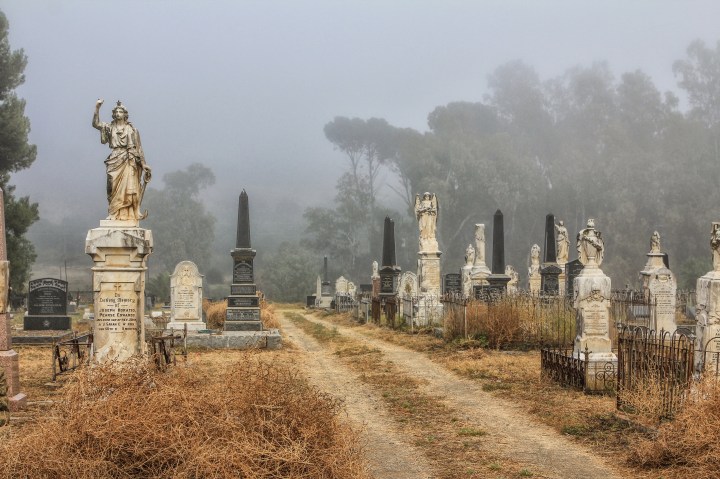
There are many stories – some sad, some wondrous, others downright weird – to be found at the Cradock cemetery in the Karoo heartland.
It’s one of those misty autumn mornings here in the Karoo, the perfect time to be strolling about the Cradock cemetery.
I can hear the resident harrier hawk, a juvenile by the sound of his hunting cry, as he sails through the grove of pine trees in search of breakfast. Across the Great Fish River, the first train of the morning passes through on its way up to Johannesburg. The massive overnight trucks in the main street begin to ready themselves for the day’s driving, grumbling and growling their way past the fast-food joints.
A true love story
Here in the cemetery, thick mist swirls about the old gravestones and statues, some headless, and I can’t help dwelling on a story from a long-time local.
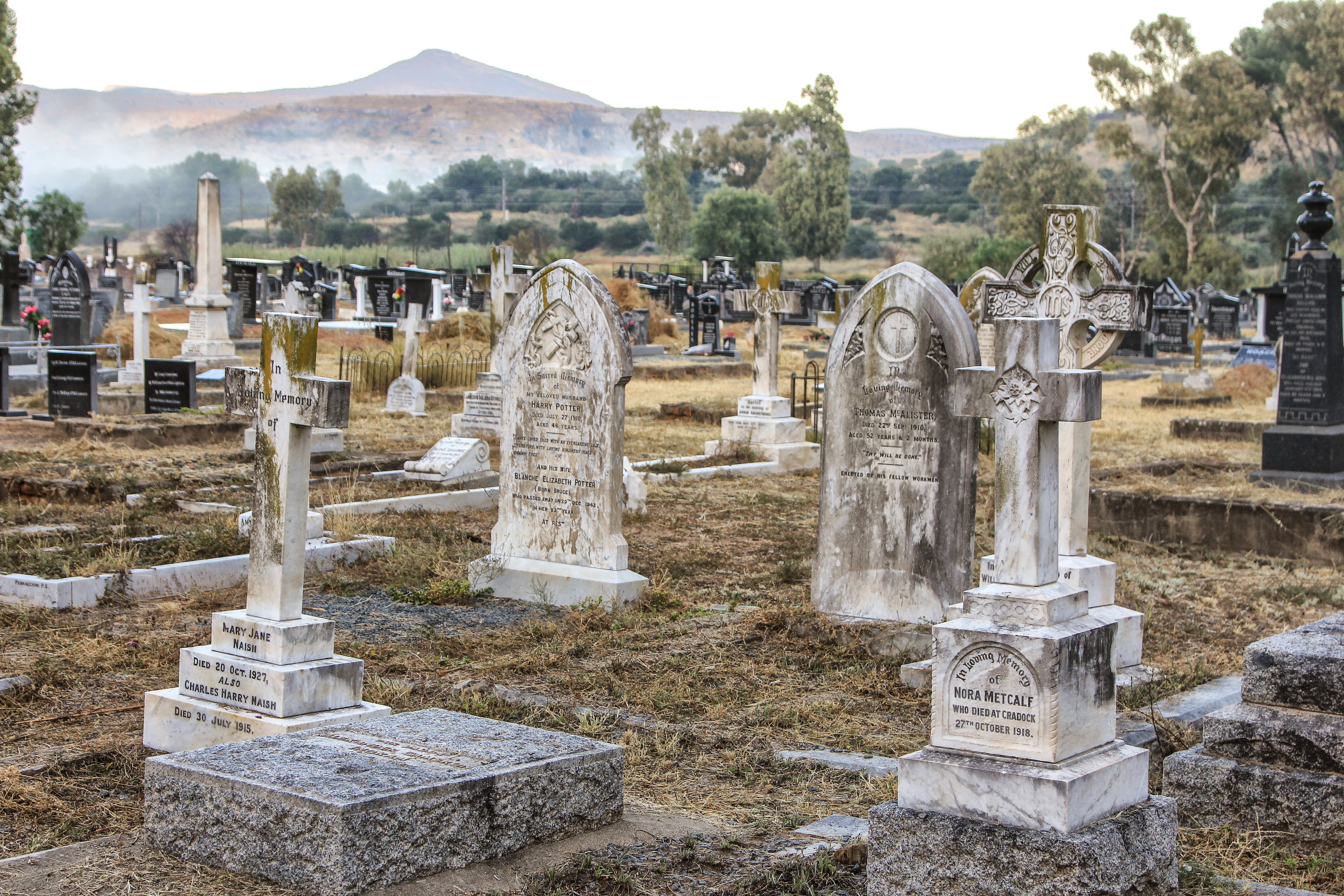
The main Cradock cemetery on a misty autumn morning – full of atmosphere and legend. Image: Chris Marais
There was a man who lost his wife and was inconsolable. On most nights after she was buried here, he would take a camp chair, a lantern and a book out to her graveside. There, he would sit and read to her until bedtime, when he would pack up and leave.
Cradock used to have two movie houses in the old days. Every so often, the bereaved man would drive down to the cemetery dressed in his “going-out clothes”. He would “escort” his wife from her grave to his car, help her in and drive off to the movies. There, he would open the door for her, let her out and buy two entrance tickets. During the movie, he would offer her chocolates. And afterwards, he would take her back to the cemetery, open the passenger door and allow her spirit to alight.
Cradock has many hard stories, some of them still in progress. But this one lifts the soul very high.
The Official Timekeeper
Here’s a simple black stone in the ground that only says: “Harry Edwin Wood – Astronomer”.
Mr Wood, history records, was the official Astronomer and Timekeeper for the Union of South Africa. He is also famous for his discovery of a comet recorded as “1660 Wood”.
In 1941, he retired and came to farm in the Mortimer area near Cradock. Legend has it Mr Wood, the one-time National Timekeeper, used to drive all the way in to Cradock (30km) to synchronise his wristwatch with the time on the steeple clock of the Dutch Reformed Mother Church. The one that looks like St Martin-in-the-Fields, Trafalgar Square, London.
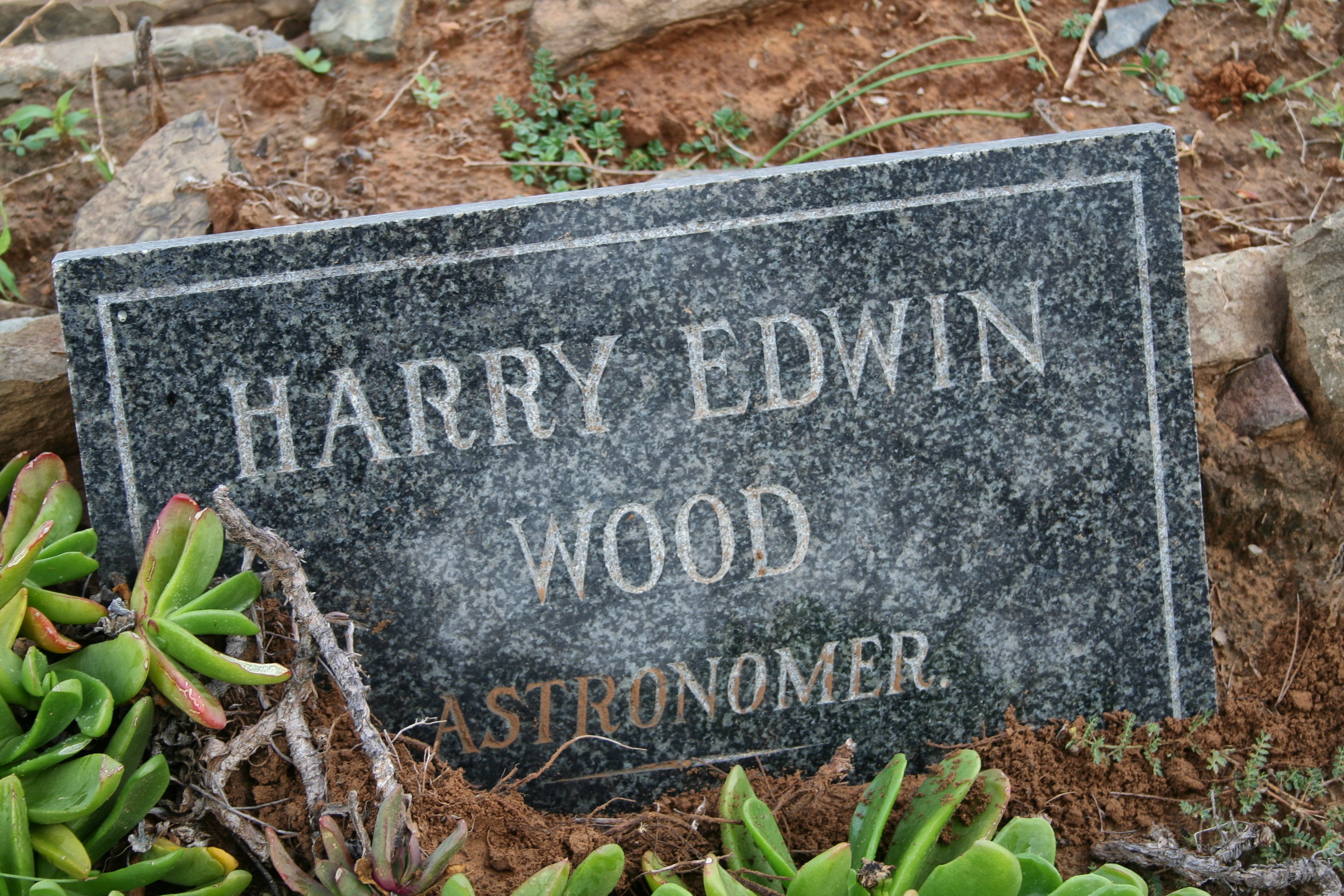
The stone of Harry Wood, who was once the official Timekeeper of the Union of South Africa. Image: Chris Marais
The General
Nearby stands the imposing stone belonging to General Pieter Hendrik Kritzinger, who fought the British in this district during the South African (Anglo-Boer) War.
Gen Kritzinger was one of the Boer warriors who led their British pursuers a “devil’s dance” from the Free State through the Karoo Midlands, from Graaff-Reinet to Aberdeen and Willowmore and all the way across to Cradock.
This intrepid Boer guerrilla fighter also farmed around here, and later became a member of the Cape Provincial Council. Although a fine soldier, he was also known as a “gentlemanly general”, and after the war his attitude to the British softened considerably. In fact, the good General was a bit of an agricultural guru to young British immigrants arriving in Cradock to set up a farming life.
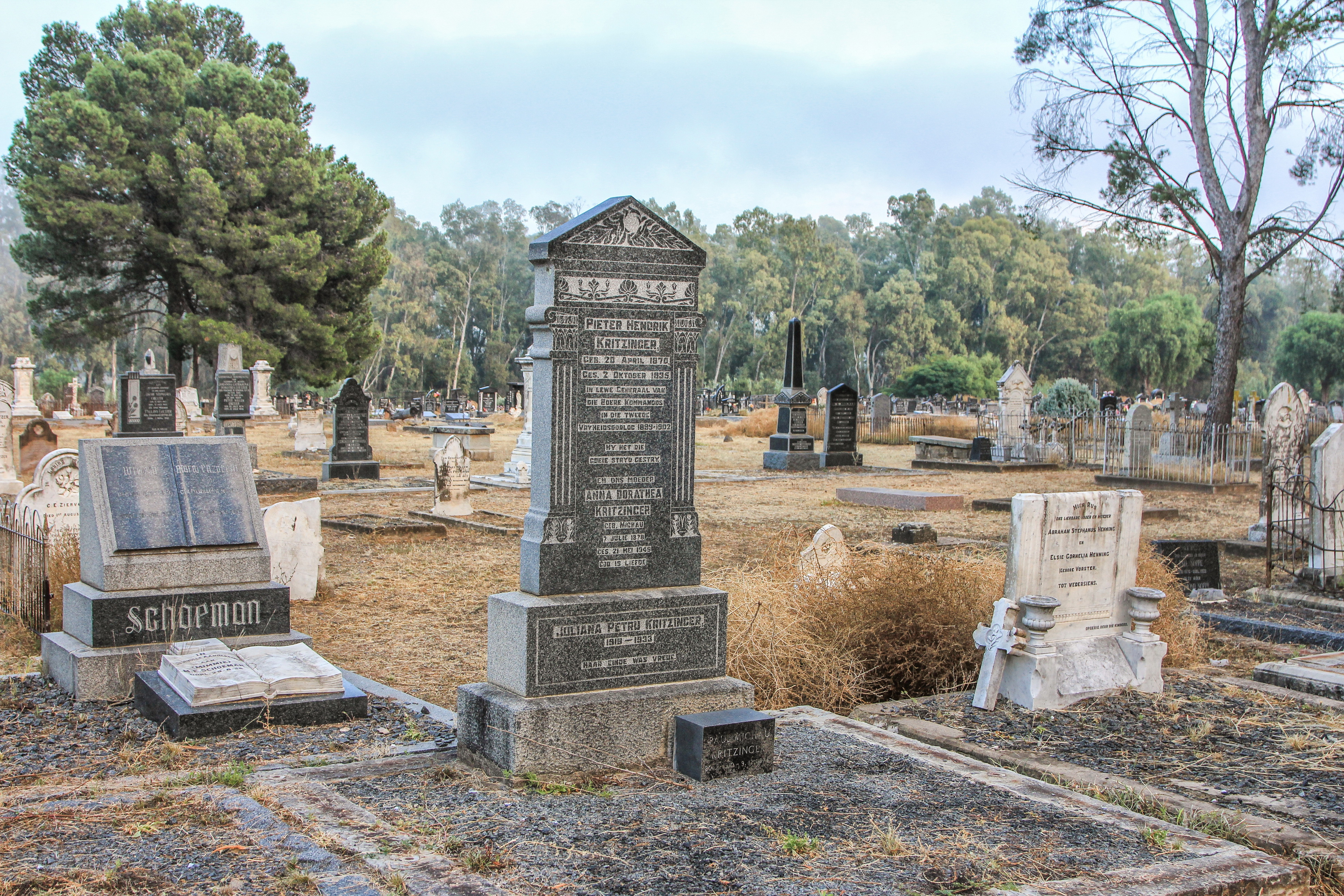
The grave of General Pieter Hendrik Kritzinger, the leading Anglo-Boer War figure of the district. Image: Chris Marais
You used to be able to find the graves of the four Cape Rebels who were executed in Cradock in front of the Victoria Hotel, and buried here. However, the devastating floods of 1974 washed them away.
One of those executed was the 16-year-old Johannes Petrus Coetzee, captured in a fight in the Stormberg area. He thought they would treat him as a POW. They charged him as a rebel, convicted him of treason and made all the Afrikaners in Cradock come down to the centre of town and watch the hanging.
One can just imagine the bitterness this evoked, and the subsequent fallout in the local community.
Here lies Harry Potter
Nearly 70 British soldiers lie buried on these grounds. Some of them came back to Cradock after the Anglo-Boer War and made a life here.
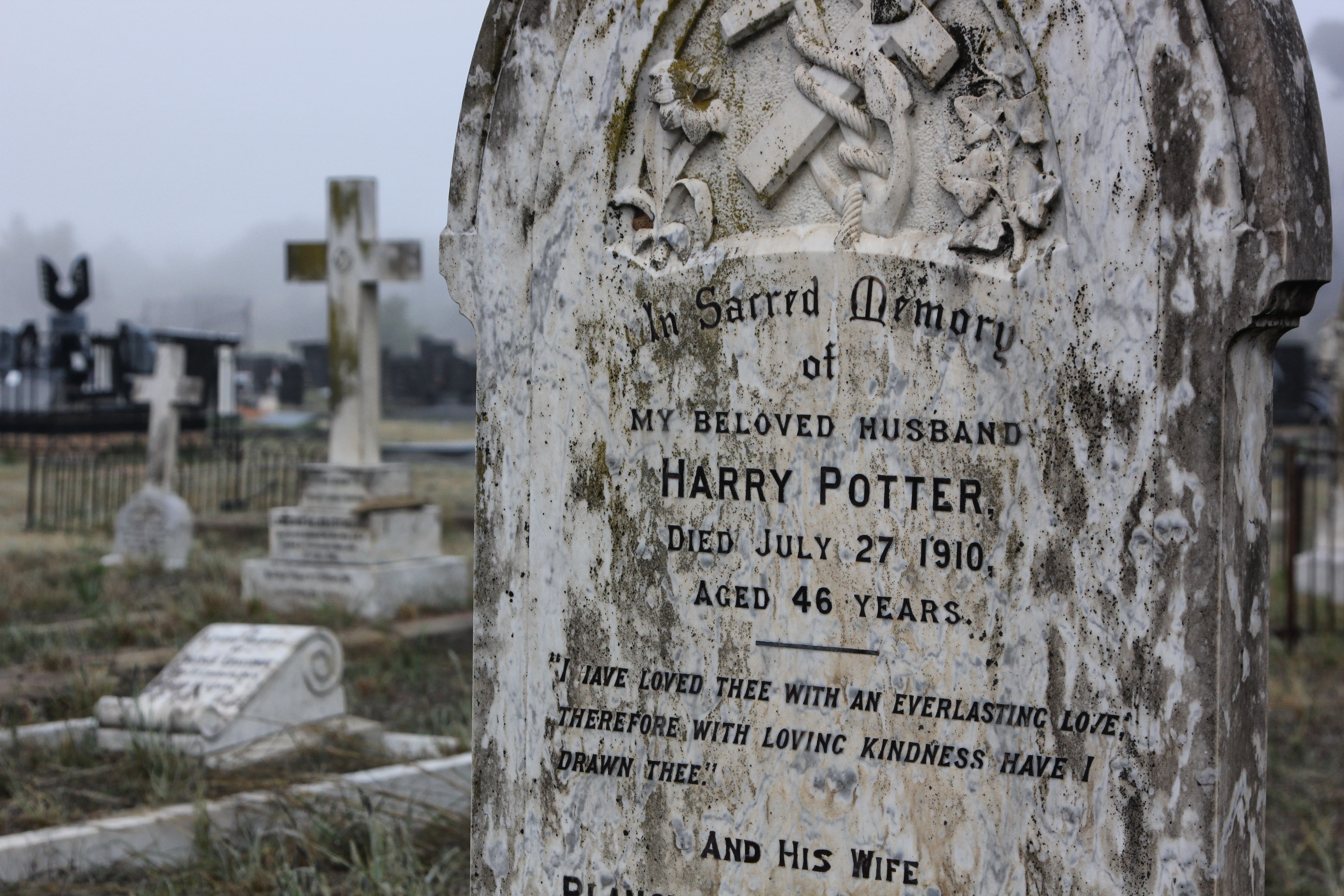
Tell the world – Harry Potter lies buried in Cradock, Karoo Heartland. Image: Chris Marais
One of them could have been a Harry Potter. It’s quite weird, really. Everyone seems to know something about most graves in this cemetery. No one, however, can tell this writer anything about this Harry Potter grave right in the centre of what a local chap calls, “The Valley of the Stiffs”.
All we know is that this Potter was a beloved husband who died on July 27, 1910, at the age of 46. Some say he was once stationed here with the Brit forces and liked it so much that he spent the rest of his years in the area.
Either way, JK Rowling needs to find out about this particular gravesite, for obvious reasons.
The Polar Explorer
The tall heaven-pointing plinth with the Freemason’s mark at its base belongs to the Koettlitz couple. Dr Reginald Koettlitz was famous for being, according to his description, “An explorer and traveller, surgeon and geologist to Expeditions North Polar and Abyssinia and with Scott to the Antarctic”.
Best known for his trip with Captain Scott on his first mission to the Antarctic, the story goes that Dr Koettlitz somehow neglected to add enough vitamin C to the polar pioneers’ diet. This was attributed by some critics as having led to the Scott party being in a weakened state before they perished on the second expedition.
Dr Koettliz was exonerated some years later – after all, Scott himself should have realised that, after the first trip, there would be a good chance of getting scurvy if they weren’t fed enough vitamin C.
Look again at the Koettlitz stone, and you will notice that he died on January 10, 1916, and that his wife, Marie Louise, died a scant two hours after him. They are both interred at this site.
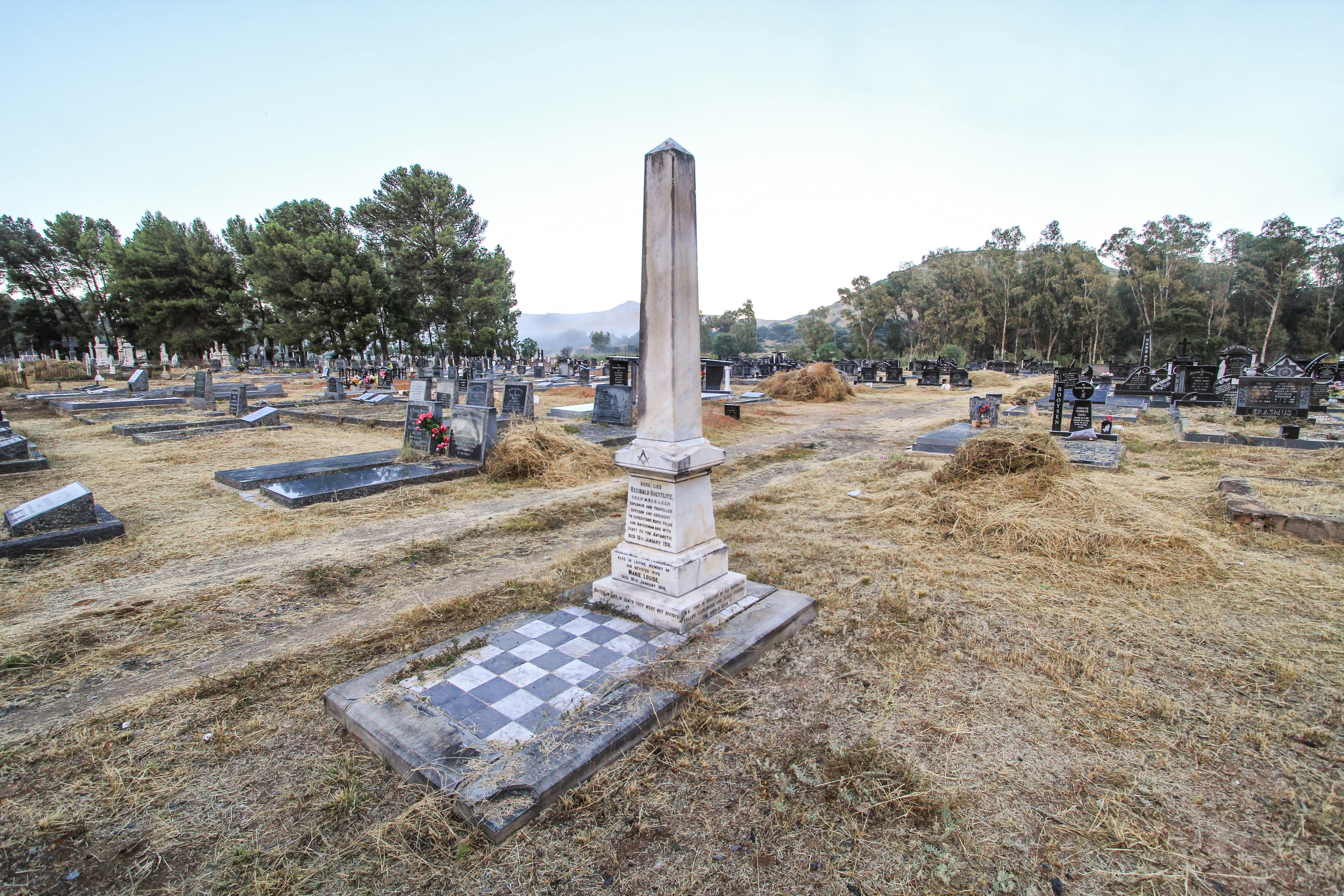
The last resting place of Dr Reginald Koettlitz, medical officer for one of Scott’s Antarctic expeditions. Image: Chris Marais
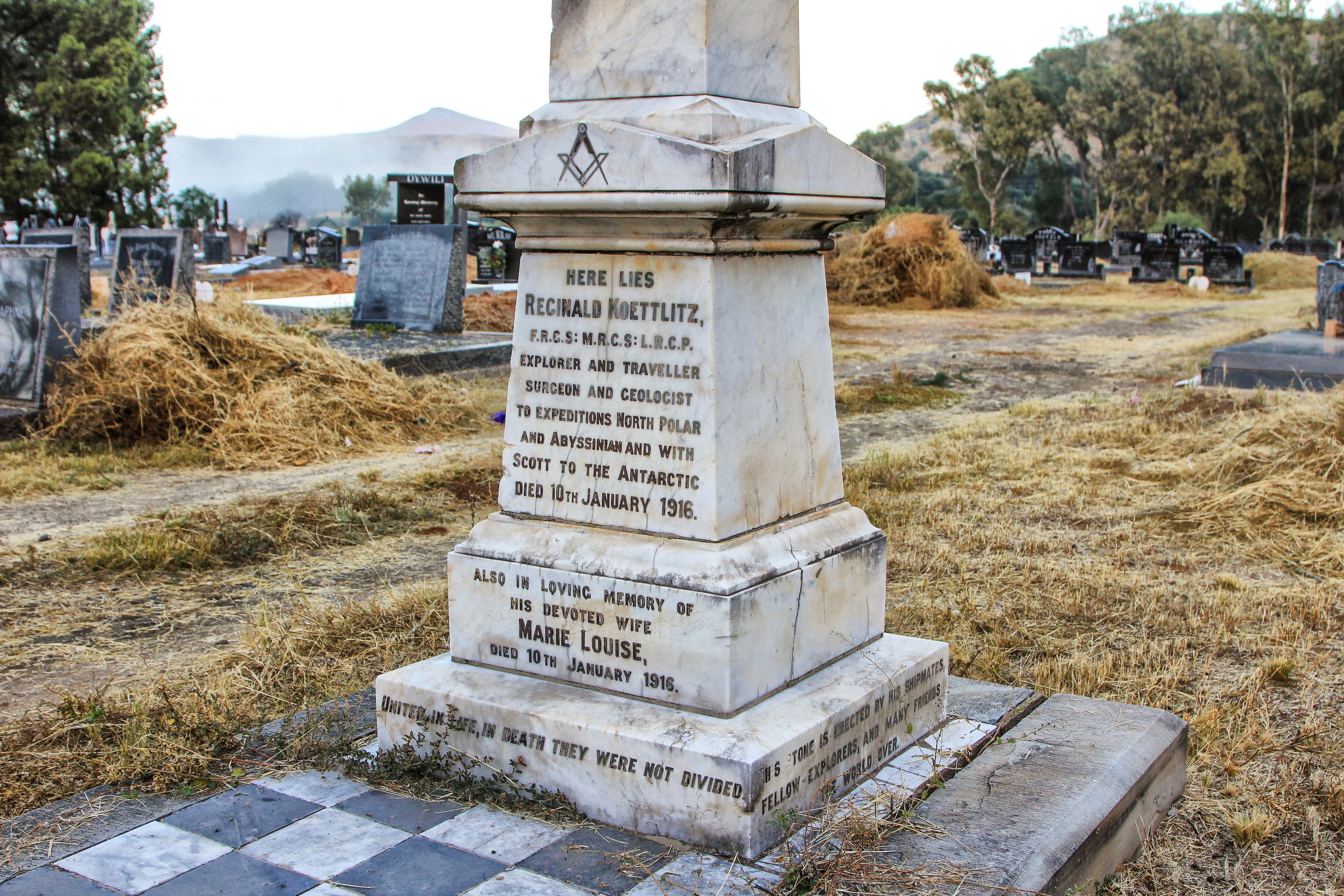
Dr Koettlitz lies buried here with his wife, Marie Louise. Image: Chris Maraispe
Victims of the Spanish Flu
Along the path, there’s another large memorial to the Brothers Botha, who died on October 25, 1918, of Die Spaanse Griep – the Spanish Flu.
The word “flu” does not really do descriptive justice to this dreaded infection that killed 20 million people around the world – 500,000 of them being right here in South Africa.
The Johannesburg Star records:
- “Now there were more than 1,000 dead in Kimberley. And they’d run out of coffins in some towns;
- A man called William Hill working at East Rand Proprietary Mine collapsed across the machinery in the winding house at 3am one day while the cage was coming up. It crashed into the headgear, killing 19;
- Doctors and nurses were dying. People checking on relatives living on the platteland found farmhouses as silent as the grave.”
The Spanish Flu epidemic of 1918 (and the fateful Black October, in particular) was judged at the time to be the “single most devastating episode in the demographic history of South Africa”.
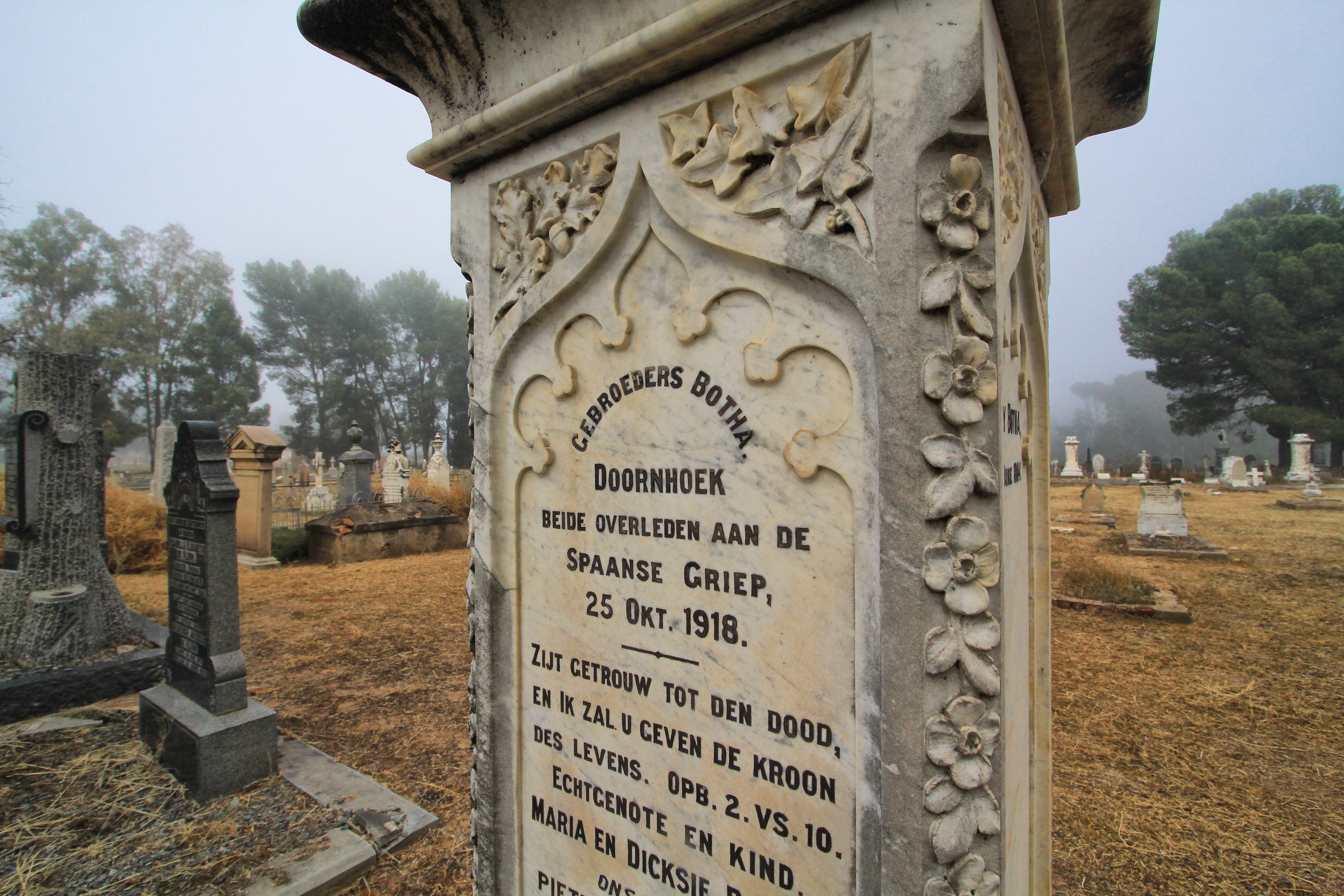
The Brothers Botha, struck down by the Spanish ‘Flu of 1918. Image: Chris Marais
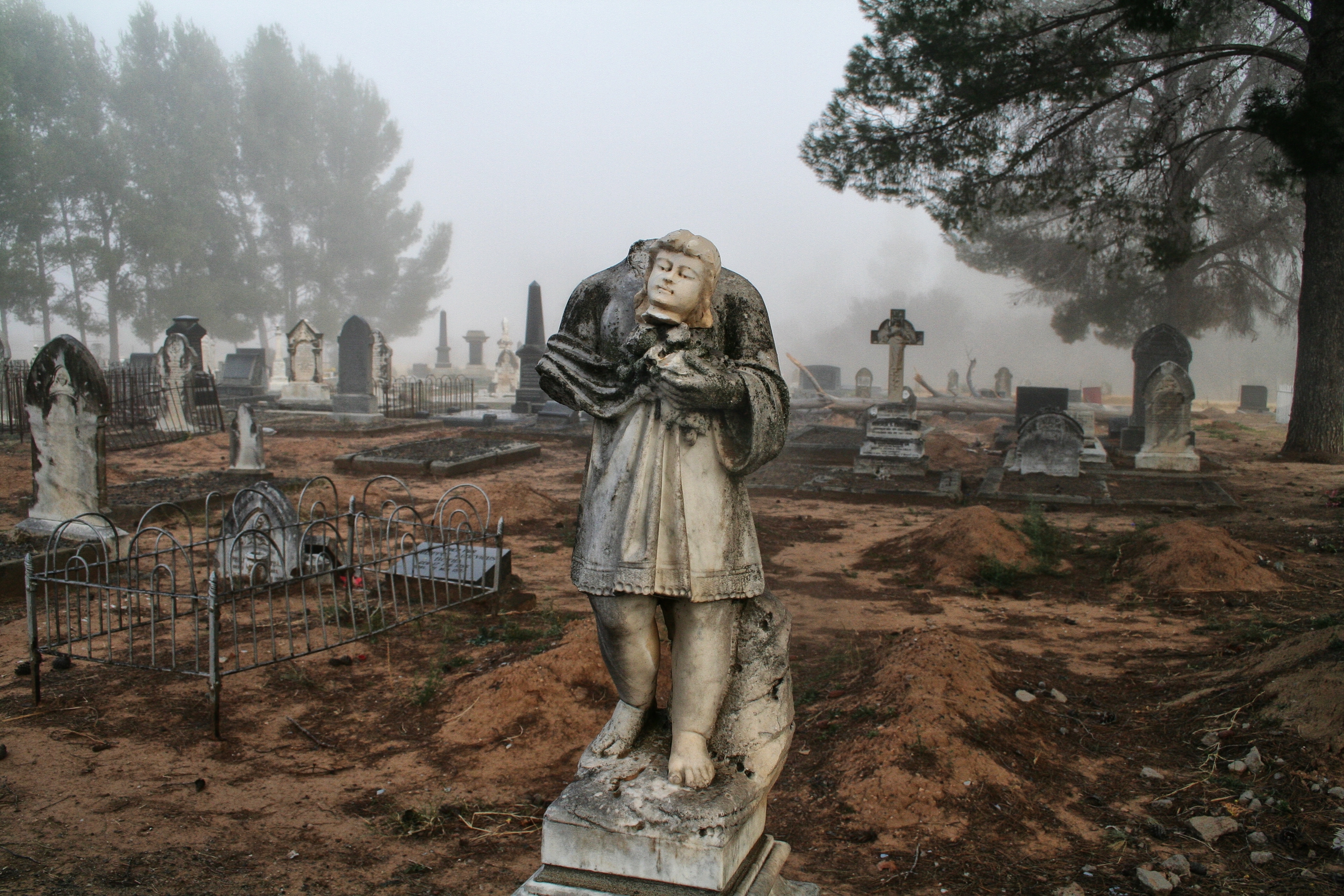
The child mortality rate in the old-time Karoo was exceptionally high. Image: Chris Marais
Facing the west
Which brings us to the children’s section of the cemetery, where wistful cherubs with downcast eyes guard the graves of babes, the pained messages of their parents on the stones almost too poignant to bear.
And as the mist clears, one can see vandals have beheaded many of the little statues.
Frontier life took its toll on the offspring of the pioneers and settlers along the Great Fish River. The Spanish Flu was but one of the many causes of infant death.
Stephen Mullineux, a neighbour who works at Water Affairs, knows quite a lot about Cradock’s history. At the cemetery, he indicates the graves of the four suicides buried in the cemetery. They face west. All the other graves face the rising sun.
Stephen shows us the grave of one Louis Levenstein, who has an etching of a rugby ball on his stone. The inscribed dedication tells that Louis died in Adelaide during a rugby match.
Nearby is another sports fan’s grave, that of Luzarian Vernon Holland. The stone is green and the base depicts an entire rugby field.
The Cradock Teetotal Society
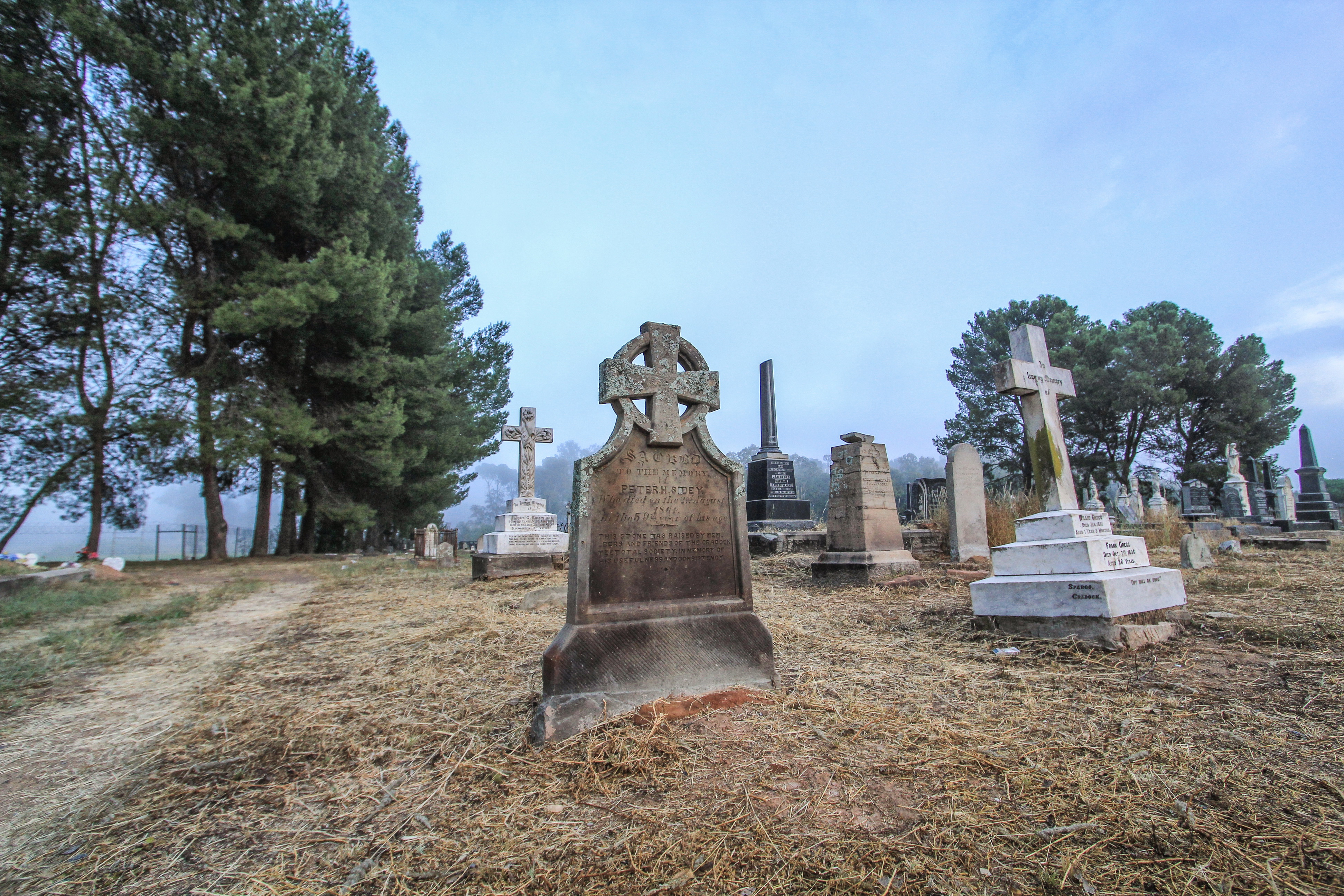
The last remains of Peter Sidey, laid to rest here by the Cradock Teetotal Society. Image: Chris Marais
On the way out, I notice the stone of one Peter Sidey, buried in 1864 with the help of the Cradock Teetotal Society. There is a Bridge Club, a 4×4 Club and an Afvalgilde (The Guild of Honorable Tripe-Eaters), but this writer never knew there was also a Teetotal Society. DM/ML
This is an extract from Karoo Roads II – More Tales from the Heartland, by Julienne du Toit and Chris Marais.
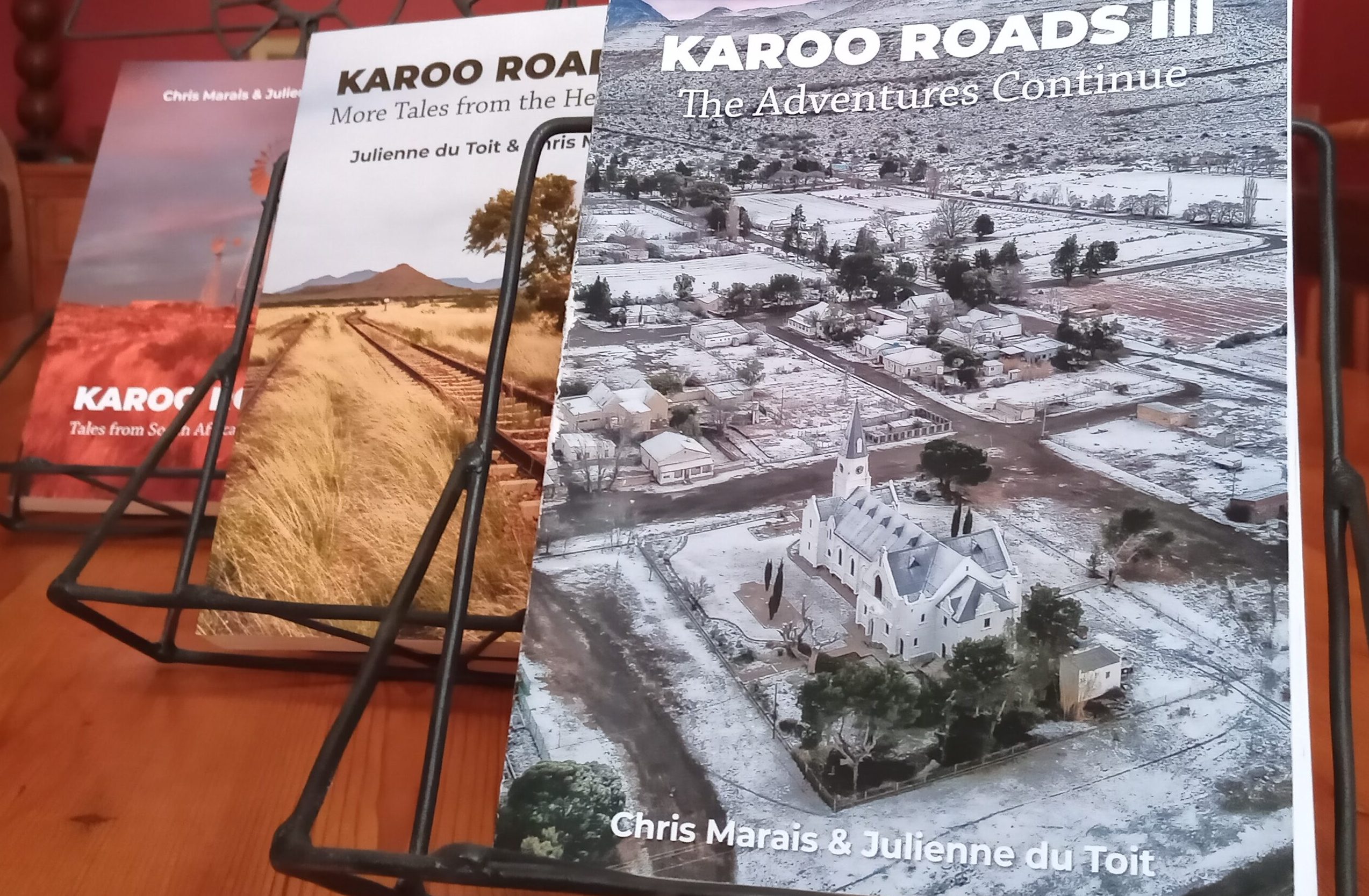
‘Karoo Roads’ Collection. Image: Chris Marais
For an insider’s view on life in the Dry Country, get the three-book special of Karoo Roads I, Karoo Roads II and Karoo Roads III for only R800, including courier costs in South Africa. For more details, contact Julie at [email protected]
In case you missed it, also read Legends of a grand old railway station in the Karoo – Putsonderwater Ghost Station
Legends of a grand old railway station in the Karoo – Putsonderwater Ghost Station



















 Become an Insider
Become an Insider
Another wonderful story by Chris and Julie.
I have a personal connection with that graveyard. I was almost 40 when I traced my biological family and learnt that I had a great-grandfather who came out from Ireland, got married in Grahamstown and lived in Cradock. He died in 1892 and would have been buried in the graveyard.
In 2018, my wife André and I visited Cradock and went to the Catholic section of the graveyard to look for James Farnham’s final resting place. We found the graves of Harry Potter – the other Harry Potter – and Reginald Koettlitz – a Freemason, who’d been with Scott on his expedition to the Antarctic – but we couldn’t find my great-grandfather’s headstone. On his death certificate his assets are listed as: “only a few articles of furniture of little value and debts far exceeding it.” There obviously wasn’t money for a headstone. We conceded defeat. When I started the car I heard a bird tweeting. The sound seemed to be coming from the engine, so I got out and looked under the bonnet. Nothing. I started the engine again and as we drove off the tweeting resumed. André said it was my great-grandfather making his presence known to us, as spirits often manifest as birds. I indulged her but decided to go to the nearest service station as I didn’t want the car to start stinking of a decomposing bird, but by the time I got there the tweeting had stopped. So perhaps we had found my great-grandfather after all. Or perhaps James Farnham had found me.